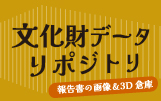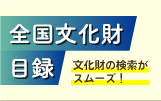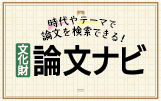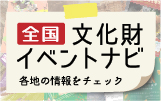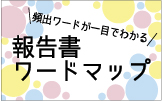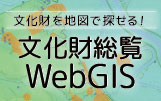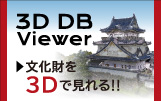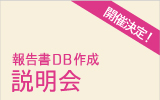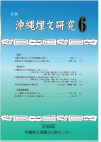| 所収論文 |
| タイトル |
古墓出土資料からみた近世陶磁器の流通 |
| 英語タイトル |
The Distribution System of Chinaware in the Recent period as seen from Excavated Specimens recovered from the Old Tombs and Graves |
| 著者 |
新垣 力
, Arakaki Tsutomu
|
| ページ範囲 |
1 - 12
|
| NAID |
|
| 都道府県 |
沖縄県
|
| 時代 |
近世(細分不明)
|
| 文化財種別 |
考古資料
|
| 史跡・遺跡種別 |
墓
|
| 遺物(材質分類) |
土製品(瓦含む)
|
| 学問種別 |
考古学
|
| テーマ |
流通・経済史
|
| 他の電子リソース |
|
| 引用表記 |
wikipedia 出典テンプレート :
{{Citation|first=力|last=新垣|contribution=古墓出土資料からみた近世陶磁器の流通|title=紀要沖縄埋文研究|date=2009-03-31|url=https://sitereports.nabunken.go.jp/22224|location=沖縄県中頭郡西原町字上原193-7|ncid=AA11905057|doi=10.24484/sitereports.22224|volume=6}}
閉じる
|
| 抄録(内容要約) |
In Okinawa, the deceased used to be buried with materials that they had used so that they could live in the same way in the afterlife. That is, most chinaware in the old tombs/graves were used by the person in their lifetime. Therefore, the analysis of the chinaware would shed light on distribution sysrems. Based on such analysis, in the main island of Okinawa, Chinese chinaware was preferred during the I7th century AD. On the other hand, after the 18th century, preference was givn to Okinawa-produced chinaware. However. in the satellite and Sakishima islands, China-and Japan-produced chinaware were still preferred. The result indicates that since glazed chinaware manufacture was restricted only on the main island of Okinawa. the main island of Okinawa had a different distribution system than did the other islands. |
| タイトル |
沖縄県読谷村大当原貝塚出土人骨について 大当原貝塚集団の身体的特徴 |
| 英語タイトル |
Human Remains recovered from the Ufutobaru Shellmidden, Yomitan Village, Okinawa Prefecture -Physical characteristics of the Ufutobaru population - |
| 著者 |
小橋川 剛
, Kobashigawa Takeshi
片桐 千亜紀
, Katagiri Chiaki
徳嶺 里江
, Tokumine Rie
本村 麻里衣
, Motomura Marii
大城 歩
, Oshiro Ayumi
天願 瑞笑
, Tengan Mizue
菅原 広史
, Sugawara Hiroshi
土肥 直美
, Doi Naomi
米田 穣
, Yoneda Minoru
|
| ページ範囲 |
27 - 40
|
| NAID |
|
| 都道府県 |
沖縄県
|
| 時代 |
沖縄貝塚
|
| 文化財種別 |
|
| 史跡・遺跡種別 |
貝塚
|
| 遺物(材質分類) |
骨・歯・角製品
|
| 学問種別 |
考古学
人類学
|
| テーマ |
|
| 他の電子リソース |
|
| 引用表記 |
wikipedia 出典テンプレート :
{{Citation|first=剛|last=小橋川|first2=千亜紀|last2=片桐|first3=里江|last3=徳嶺|first4=麻里衣|last4=本村|first5=歩|last5=大城|first6=瑞笑|last6=天願|first7=広史|last7=菅原|first8=直美|last8=土肥|first9=穣|last9=米田|contribution=沖縄県読谷村大当原貝塚出土人骨について 大当原貝塚集団の身体的特徴|title=紀要沖縄埋文研究|date=2009-03-31|url=https://sitereports.nabunken.go.jp/22224|location=沖縄県中頭郡西原町字上原193-7|ncid=AA11905057|doi=10.24484/sitereports.22224|volume=6}}
閉じる
|
| 抄録(内容要約) |
The Ufutobaru shellmidden is located in Yomitan Village, located in the central region of the main island of Okinawa and dated to the Late Shellmidden period (the Early Yayoi-Heian period). It was excavated in 1972 and 1989. These two seasons of excavations yielded human remains. The skull of one of the individuals was covered by pottery. Human bones were concentrated in some areas. The date of these human bone clusters is not clear since no datable artifacts were associated with them. We examined these human remains. Consequently, in addition to the individual whose skull was covered by pottery. there are eighteen other individuals. Their age and sex are: twelve adult males (MNI), five adult females, and one young adult of unknown sex. Morphologically, both males and females have small skulls and have well developed upper limbs compared to the lower limbs. These morphological characteristics are consistent with other prehistoric populations in the region. Furthermore, three individuals each had four canine teeth extracted from their mandibles. This was practice was also common in the Amami and Okinawa archipelagos during prehistoric times. |
| タイトル |
沖縄県座間味村古座間味原シル地区砂丘地出土人骨について |
| 英語タイトル |
Human Remains recovered from the Shiru area of Furuzamamibaru district, Zamami Village, Okinawa Prefecture |
| 著者 |
徳嶺 里江
, Tokumine Rie
片桐 千亜紀
, Katagiri Chiaki
小橋川 剛
, Kobashigawa Takeshi
本村 麻里衣
, Motomura Marii
大城 歩
, Oshiro Ayumi
天願 瑞笑
, Tengan Mizue
菅原 広史
, Sugawara Hiroshi
土肥 直美
, Doi Naomi
米田 穣
, Yoneda Minoru
|
| ページ範囲 |
41 - 52
|
| NAID |
|
| 都道府県 |
沖縄県
|
| 時代 |
|
| 文化財種別 |
|
| 史跡・遺跡種別 |
|
| 遺物(材質分類) |
骨・歯・角製品
|
| 学問種別 |
考古学
人類学
|
| テーマ |
|
| 他の電子リソース |
|
| 引用表記 |
wikipedia 出典テンプレート :
{{Citation|first=里江|last=徳嶺|first2=千亜紀|last2=片桐|first3=剛|last3=小橋川|first4=麻里衣|last4=本村|first5=歩|last5=大城|first6=瑞笑|last6=天願|first7=広史|last7=菅原|first8=直美|last8=土肥|first9=穣|last9=米田|contribution=沖縄県座間味村古座間味原シル地区砂丘地出土人骨について|title=紀要沖縄埋文研究|date=2009-03-31|url=https://sitereports.nabunken.go.jp/22224|location=沖縄県中頭郡西原町字上原193-7|ncid=AA11905057|doi=10.24484/sitereports.22224|volume=6}}
閉じる
|
| 抄録(内容要約) |
The Furuzamaibaru district in the Zamami Village. Okinawa Prefecture, is located on Zamami island in the Kerama archipelago. Human remains were recovered from the Shiru area, at the southern end of a sand dune in the southern part of Zamai island. It has been thought that human remains recovered from the Shiru area are prehistoric because they share morphological similarities with the Gushikawa island sites in Izena Village, and the Momenbaru and Ufutobaru sites in Yomitan Village. The possible practice of teeth extraction also implies that they are prehistoric. However, because these human bones were scattered in the Shiru area and without datable artifacts, the age of these bones was unclear. We have examined these human bones. At least three adult males, three adult females, and one young adult individual have been identified. These are all dried bones. Osteological analysis suggests that these individuals are characterized by l) hyperbrachy cephalic (round head) and 2) well developed upper limbs compared to the lower limbs These traits also characterize prehistoric populations in the southwestern archipelago. Four canines had been extracted from each of the mandibles. Therefore, the human remains recovered from the Shiru area are likely prehistoric. Furthermore, dental caries, enamel hypoplasia ,, and specialized ware patterns are also present. |
| タイトル |
本部町新里遺跡表採の磨製石斧 |
| 英語タイトル |
A Polished Stone Axe Surface Collected at the Shinzato Site in Motobu Town |
| 著者 |
大堀 皓平
, Ohhori Kohei
瑞慶覧 長順
, Zukeran Chojun
|
| ページ範囲 |
53 - 62
|
| NAID |
|
| 都道府県 |
沖縄県
|
| 時代 |
沖縄貝塚
|
| 文化財種別 |
考古資料
|
| 史跡・遺跡種別 |
|
| 遺物(材質分類) |
石器
|
| 学問種別 |
考古学
|
| テーマ |
資料紹介
|
| 他の電子リソース |
|
| 引用表記 |
wikipedia 出典テンプレート :
{{Citation|first=皓平|last=大堀|first2=長順|last2=瑞慶覧|contribution=本部町新里遺跡表採の磨製石斧|title=紀要沖縄埋文研究|date=2009-03-31|url=https://sitereports.nabunken.go.jp/22224|location=沖縄県中頭郡西原町字上原193-7|ncid=AA11905057|doi=10.24484/sitereports.22224|volume=6}}
閉じる
|
| 抄録(内容要約) |
This paper reports a stone axe found during surface survey at the Shinzato site in Motobu Town. It is identified as an axe because the blade has an asymmetrical edge and use-wear damage consisting of diagonal lines. The axe is made of green schist and is elaborately polished. When the axe is compared with other polished stone axes, it is similar to axes that are classified as “refined”. It is further classified into the corner square tubular-shaped type. This is one of types in the refined stone axe style. A chip off at the base might have been produced as a result of its use or it might imply that the axe was in the process of morphological modification from a refined form to a crudely made form. At the present time. we do not have enough data to examine these suggestions.
We think it is urgent to establish a stone tool typology, including axes, for the Ryukyu archipelago. We also suggest that it is necessary to conduct field research, reexamine previously excavated stone tools, and compare data obtained from other regions. We also insist that it is important to adopt analytical methods developed in other parts of Japan. |
| タイトル |
首里城西のアザナ跡の鍛冶・鋳造工房 |
| 英語タイトル |
The Forging and Casting Atelier at the Iri-no-azana-ato, Shuri Castle |
| 著者 |
上原 静
, Uehara Shizuka
|
| ページ範囲 |
71 - 111
|
| NAID |
|
| 都道府県 |
沖縄県
|
| 時代 |
グスク
琉球王朝
|
| 文化財種別 |
|
| 史跡・遺跡種別 |
製鉄
その他の生産遺跡
|
| 遺物(材質分類) |
金属器
|
| 学問種別 |
考古学
|
| テーマ |
|
| 他の電子リソース |
|
| 引用表記 |
wikipedia 出典テンプレート :
{{Citation|first=静|last=上原|contribution=首里城西のアザナ跡の鍛冶・鋳造工房|title=紀要沖縄埋文研究|date=2009-03-31|url=https://sitereports.nabunken.go.jp/22224|location=沖縄県中頭郡西原町字上原193-7|ncid=AA11905057|doi=10.24484/sitereports.22224|volume=6}}
閉じる
|
| 抄録(内容要約) |
The Iri-no-azana-ato, located in the western part of the Shuri Castle, was excavated from July to August in 1991. The excavation yielded materials that imply the presence of the metal atelier that was managed by the government. The materials consisted of furnaces, molds, melting pots (crucibles), tuyeres, as well as a large amount of iron and bronze filings. Based on the analysis of the molds, the atelier was apparently used to manufacture temple bells and Hatome coins as well as other metal objects that were used in the Castle. The atelier operated from the 15th to 16th centuries AD. |
| タイトル |
首里城および周辺遺跡出土のシカに関する考察 |
| 英語タイトル |
Shika deer bones Excavated from Shuri Castle and Tenkai Temple |
| 著者 |
菅原 広史
, Sugawara Hiroshi
|
| ページ範囲 |
13 - 26
|
| NAID |
|
| 都道府県 |
沖縄県
|
| 時代 |
琉球王朝
|
| 文化財種別 |
|
| 史跡・遺跡種別 |
|
| 遺物(材質分類) |
骨・歯・角製品
|
| 学問種別 |
考古学
|
| テーマ |
|
| 他の電子リソース |
|
| 引用表記 |
wikipedia 出典テンプレート :
{{Citation|first=広史|last=菅原|contribution=首里城および周辺遺跡出土のシカに関する考察|title=紀要沖縄埋文研究|date=2009-03-31|url=https://sitereports.nabunken.go.jp/22224|location=沖縄県中頭郡西原町字上原193-7|ncid=AA11905057|doi=10.24484/sitereports.22224|volume=6}}
閉じる
|
| 抄録(内容要約) |
The Shuri Castle and neighboring sites such as the Tenkai Temple often yield the remains of Shika deer, which is not native to the Okinawa islands. Based on comparative studies with modern deer specimens, Shika deer bones recovered from the region belong to Cervus nippon. Furthermore, it is possible to further classify them into subspecies by measuring the size of the bones. The smaller are C. nippon keramae, C. nippon yakushimae, and C. nippon mageshimae; the larger ones are C. nippon pulchellus, C. nippon nippon, C. nippon centralis and C. nippon yesoensis.
The analysis of these bones shed light on the external relationship of the Ryukyu Kingdom. The analysis indicates that C. nippon was brought to the Okinawa Islands several times. One of the reasons that Shika deer were imported was for consumption as indicated by the presence of cut marks. Ryukyu-koku-yurai-ki (the genesis of the Ryukyu Kingdom), describes that in the early 17th century deer were carried from Satuma into Ryukyu. Additionally some documents record that venison was one of the menu items with which the king regaled Chinese envoys. Thus the existence of C. nippon remains from Shuri and Tenkai Temple evidences some form of relationship among Ryukyu, China, and Japan. |
| タイトル |
シーリ遺構から見る御内原のくらし 一平成19年度首里城跡御内原北地区発掘調介から一 |
| 英語タイトル |
The life of the Uuchibaru as seen from the Shiiri -Excavation Research of the Northen Uuchibaru area, Shuri Castle site in 2007 fiscal year- |
| 著者 |
仲座 久宜
, Nakaza Hisayoshi
|
| ページ範囲 |
63 - 70
|
| NAID |
|
| 都道府県 |
沖縄県
|
| 時代 |
琉球王朝
|
| 文化財種別 |
|
| 史跡・遺跡種別 |
城館
|
| 遺物(材質分類) |
|
| 学問種別 |
考古学
|
| テーマ |
|
| 他の電子リソース |
|
| 引用表記 |
wikipedia 出典テンプレート :
{{Citation|first=久宜|last=仲座|contribution=シーリ遺構から見る御内原のくらし 一平成19年度首里城跡御内原北地区発掘調介から一|title=紀要沖縄埋文研究|date=2009-03-31|url=https://sitereports.nabunken.go.jp/22224|location=沖縄県中頭郡西原町字上原193-7|ncid=AA11905057|doi=10.24484/sitereports.22224|volume=6}}
閉じる
|
| 抄録(内容要約) |
When the Shuri Castle was excavated during the 2007 fiscal year, a structure called the Shiiri was unearthed. It was made of stones and believed to have been used as a garbage dump. The feature yielded not only chinaware dating to the l 7th century AD but also numerous ecofacts. From these data, it is possible to reconstruct past lifeways at the Uuchibaru. This paper attempts to reconstruct past lifeways at the site based on recovered materials and interviews with elder people who knew about the Shuri Castle in the early 1900s. |
|
 沖縄県立埋蔵文化財センター
- 沖縄県
沖縄県立埋蔵文化財センター
- 沖縄県

